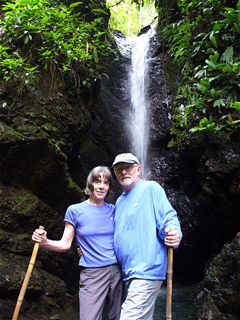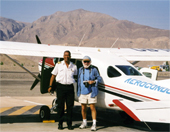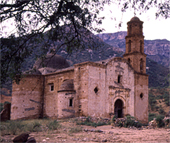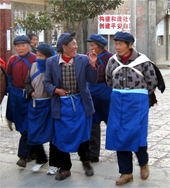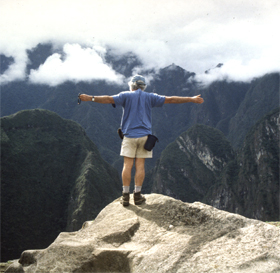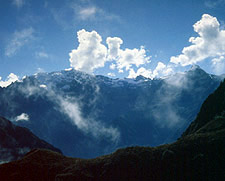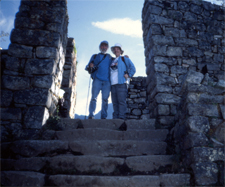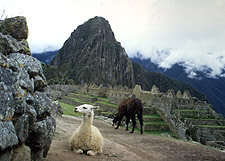 |
| Machu Picchu, ‘Lost City’ of the Incas |
“Suddenly we found ourselves standing in front of the ruins of two of the finest and most interesting structures in ancient America. Made of beautiful white granite, the walls contained blocks of Cyclopean size, higher than a man. The sight left me spellbound.”
When Hiram Bingham went looking for the legendary Inca city of Vilcabamba, the last refuge of the Inca kings, he did not suspect that his journey would lead him to discover the most spectacular archeological site in the Americas—Machu Picchu.
When the expedition from Yale University, of which Bingham was the director, entered the Urubamba Canyon, in July of 1911, a peasant told him of the ancient ruins at the top of a hill called Machu Picchu. Bingham accompanied him up the dense jungle-covered slope to the top, where a child guided Bingham to the ancient stone structures buried beneath tropical vegetation. Bingham was so impressed that he wrote in his diary, “would anyone believe what I have found?”
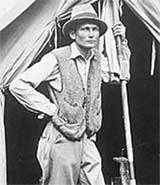 |
| Hiram Bingham in 1911 |
It is hard to imagine a more spectacular setting—an ancient stone city 1,300 feet above a frothing whitewater river, surrounded by jungle-covered peaks and brilliant orchids.
Of the two surrounding peaks, the first is named Huayana Picchu, which translates to “young peak” and is the one most often seen in photographs. The second peak is called Machu Picchu or “older mountain.” The original name of the city has long been forgotten.
Until Bingham’s discovery, Machu Picchu had been unknown to the outside world for nearly 400 years. It was a mystery how all knowledge and records of an entire city disappeared. It is now believed that Machu Picchu was not a city at all, but a royal estate and religious retreat, built around 1460 and located off the main routes. It could only be reached by paths accessible to those traveling by royal decree. The Incas had no written language. Their history was kept by verbal historians, who, following the collapse of the Inca state, were unemployed. Few of the Inca people ever knew that Machu Picchu even existed. As the Spaniards advanced into Peru, around 1527, half of the population died of small pox. This was followed by civil war and the abandonment of Machu Picchu. Thus, this magnificent “stone city” disappeared.

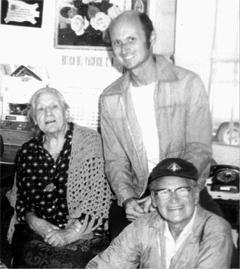
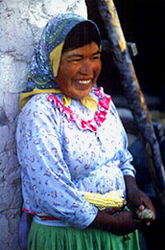 Who were these strangely-dressed people, who came from obscurity to outpace hundreds of experienced runners?
Who were these strangely-dressed people, who came from obscurity to outpace hundreds of experienced runners?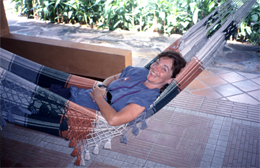 Some say the it was the ancient Greeks, some argue that it was indigenous Americans like the Mayans of the
Some say the it was the ancient Greeks, some argue that it was indigenous Americans like the Mayans of the 